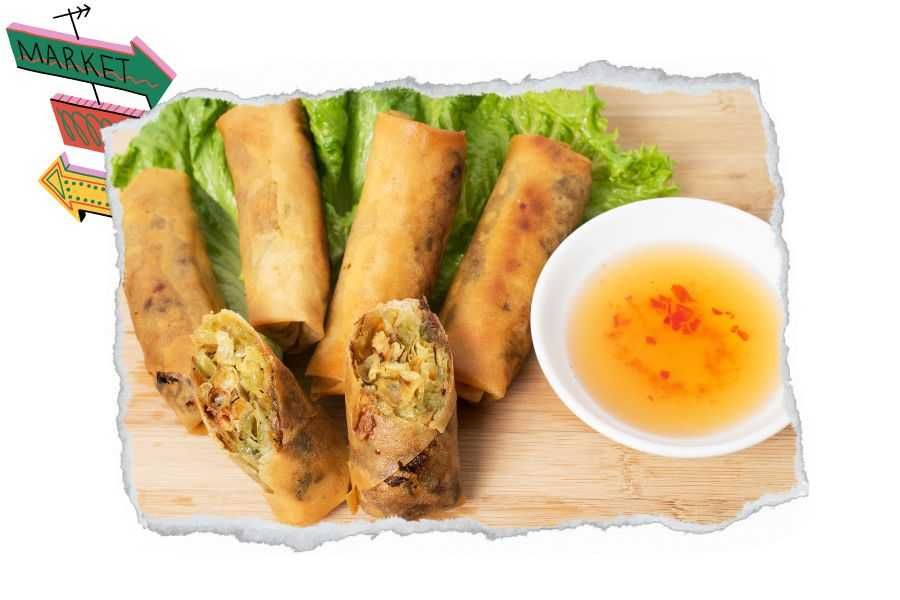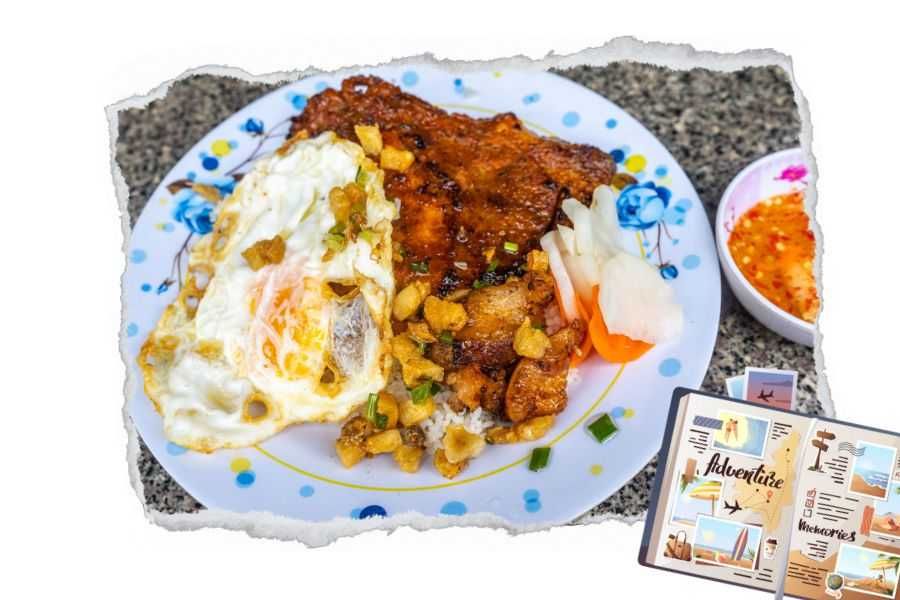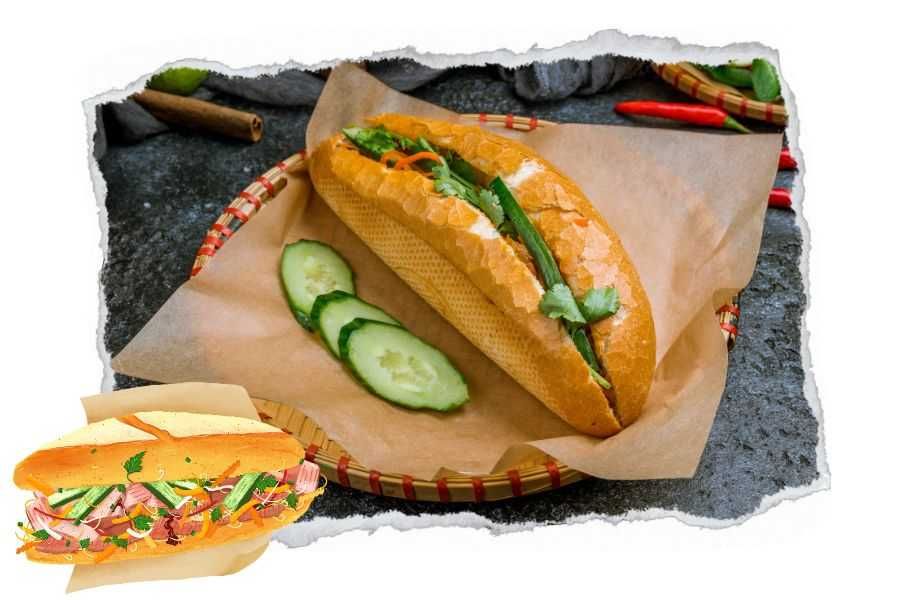Vietnamese Cuisine: What to eat in Vietnam?
Vietnamese cuisine is an essential part of Vietnamese culture, holding not only the spiritual values but also preserving the material values of different regions' lifestyle and specialties. And of course, one of the best ways to learn (and enjoy) a country's way of life is through food. The culinary scene of a country is a reflection of the country's rich history and culture. Although the term 'Vietnamese cuisine' is regularly used to refer to the country's well-known dishes, there are endless regional and ethnic variations. It is a cuisine that is both simple and sophisticated, loved and enjoyed by people from all over the world. Join us on this culinary ride to learn about this alluring aspect of Vietnam.
The colorful palate of Vietnamese Cuisine
The Vietnamese locals' creativity and capacity to utilize different elements of the natural environment is clearly reflected in their culinary culture. The majority of their food ingredients are produced from natural sources. Among the elements, rice, veggies, and fish make up the three main components of a classic Vietnamese meal.
Vietnamese cuisine is known for its regional variations, with each region having its own distinct flavors and cooking methods. The three main regions are the North, the Central, and the South. Northern cuisine is known for its light and delicate flavors, while Central cuisine is known for its bold and spicy flavors. Southern cuisine is a fusion of the two, with its own unique flavors and dishes.
Here are some examples of dishes from each region:
- Northern cuisine: Pho, Bun Cha, Banh Cuon
- Central cuisine: Banh Mi, Bun Bo Hue, Cao Lau
- Southern cuisine: Goi Cuon, Banh Xeo, Com Tam
Vietnamese Signature Dishes
Here are some of the best traditional Vietnamese cuisines representing the rich cultural heritage and essence of life here. Let's find out what they are and what makes them so special. Keep on reading to learn more about our must-try recommendations!
Pho
You cannot talk about Vietnamese cuisine without mentioning pho. This broth-based noodle dish is so famous that the word was added into the Oxford English Dictionary in 2007. This cult-favorite hearty dish resembles a warm hug with its fragrant broth accompanied with zesty condiments. From lime juice, fish sauce, chopped chili, herbs, to chili sauce or hoisin sauce, there are a lot of add-in ingredients for pho.
Preparation for pho is laborious; however, the excellent taste of pho is absolutely rewarding. Nowadays, a variety of beef cuts are available to diners, including rare beef, flank, brisket, tripe, tendon, and meatballs. You can also easily find other variants of this national dish in different parts of Vietnam such as: pho rolls, dry pho (without broth), or pho in red wine. Additionally, chefs abroad are becoming even more creative by adding things like crawfish or sous vide beef.
Bun Cha
Whenever you come to Hanoi, you must try bun cha. This Hanoian dish features tantalizing grilled meatballs and grilled bacon, steeped with diluted fish sauce and slices of carrots and green papaya. The meat is enjoyed with rice noodles and of course, we cannot miss the herbs to balance out the taste. The diluted fish sauce, with its sweet and sour notes, is lighter than the sauces used in other Vietnamese dishes. This allows diners to freely immerse the rice noodles into the sauce bowl, blending the aromatic meatballs and vegetables together.
There is no specific record of when bun cha was first introduced to the Northern Vietnamese cuisine scene; however, one thing we know for sure is that the dish is and will always be Hanoi's food staple. Fun fact: bun cha gained its international fame when Former U.S. President Barack Obama and Anthony Bourdain visited a local bun cha eatery. Ever since, the place has been offering the Obama combo including a portion of bun cha, a crab spring roll, and a bottle of Hanoi beer.
Fried Spring Rolls (Cha nem ran / cha gio)
Spring rolls are Vietnam's national dish as we can spot them at almost every celebration or family gatherings. They somewhat resemble croquettes, but they taste quite different, are more delicate, and are lighter. Typical ingredients for spring rolls include ground pork, vegetables, rice vermicelli, Vietnamese mushrooms, and Japanese shiitake. The fillings might vary depending on the regions and personal preferences. The rolls are served with sweet fish sauce. To bring out the best taste of spring rolls, the fish sauce is mixed with vinegar, water, and sugar, scattered with carrot threads. This combination creates the perfect balance of all the flavors, bringing us an irresistibly delicious and addictive dish.

Banh Mi
Banh mi, a beloved Vietnamese dish, has become a national symbol and one of the country's culinary icons. Vietnamese bread has had a long and varied history, but it has now transcended national borders and made its mark on international cuisine.
A banh mi can be considered an equivalent of a sandwich, with a baguette holding all the amazing fillings inside. The dish is popular for its convenience, offering a quick yet fulfilling bite whenever you're on the go. You can find all types of different banh mi here in Vietnam. Did you know that each region has its own unique take on this widely popular dish, creating multiple tasty variations for foodies to enjoy and explore? Inside a typical banh mi, you usually find fried egg, roasted pork with crispy skin, ham, char siu pork, or pate inside. Of course it won't be complete without some herbs and vegetables to add some lightness to the palate.
Banh Xeo
Another notable dish worth-mentioning is Vietnamese rice-flour pancakes known as banh xeo. This crunchy, oddly-shaped pancake is mostly stuffed with bean sprouts, mungbean, pork, and shrimp. For vegetarian alternatives, tofu, mushrooms, and other vegetables are used instead. Turmeric, a flavorful spice that gives the dish its distinctive yellow color, is a key ingredient.
As banh xeo can vary in size, taste, and fillings depending on the region, do not be surprised if your banh xeo is different from others. For example, banh xeo in Central Vietnam are smaller and crispier; meanwhile, those in Southern Vietnam tend to be bigger, softer, and have a hint of coconut milk taste.
However, you can always expect that banh xeo is served with an assortment of fresh herbs and vegetables such as lettuce, mustard greens, basil, fish mint, perilla, and many more. The vegetables help to balance out the oiliness of the pancake. Just imagine wrapping the irresistible, delicate golden crust in the greens and dipping the roll in fish sauce. You will fall in love with this explosion of flavor.

Com Tam
Com tam is a super popular rice dish from Southern Vietnam that consists of broken rice, grilled pork chop, pork skin, steamed egg meatloaf, a fried egg, and some vegetables. It is delicious, filling, affordable, widely available, and tastes different depending on where you get it. Every stall or diner will have their own way of marinating the pork chop; therefore, every single place has their own signature taste.
Additionally, the toppings for com tam are quite varied! Although pork chops are the traditional choice, com tam also goes well with Chinese sausages, ribs, braised pork, or fried chicken. We highly advise you to stop by any com tam stand and select the incredible toppings to sample and experience the amazing flavors of Southern Vietnamese cuisine.
It is not surprising that Vietnamese cuisine is praised and enjoyed by diners all over the world, given its richness, diversity, and delicacy. While there are countless Vietnamese restaurants overseas, nothing compares to the experience of savoring the authentic dishes on the streets of Vietnam. So if you're ever ready for a foodie adventure in Vietnam, be sure to send us a message!

